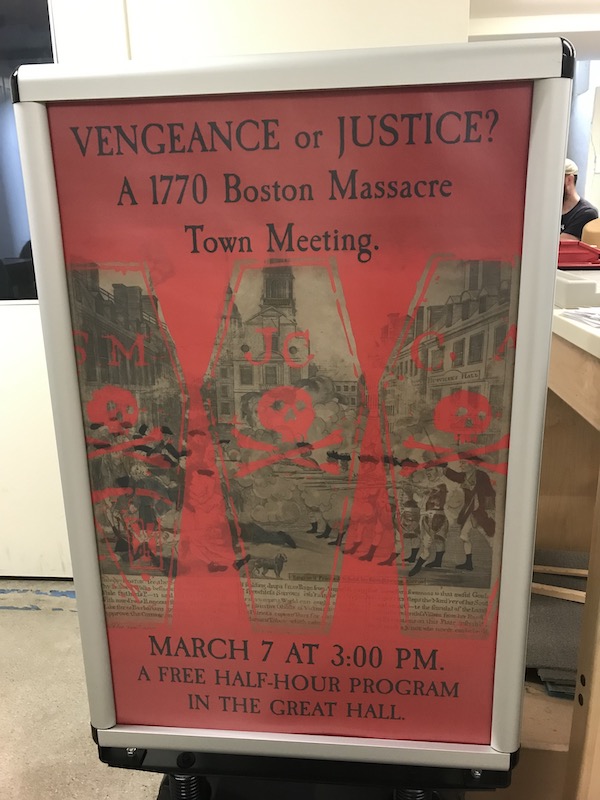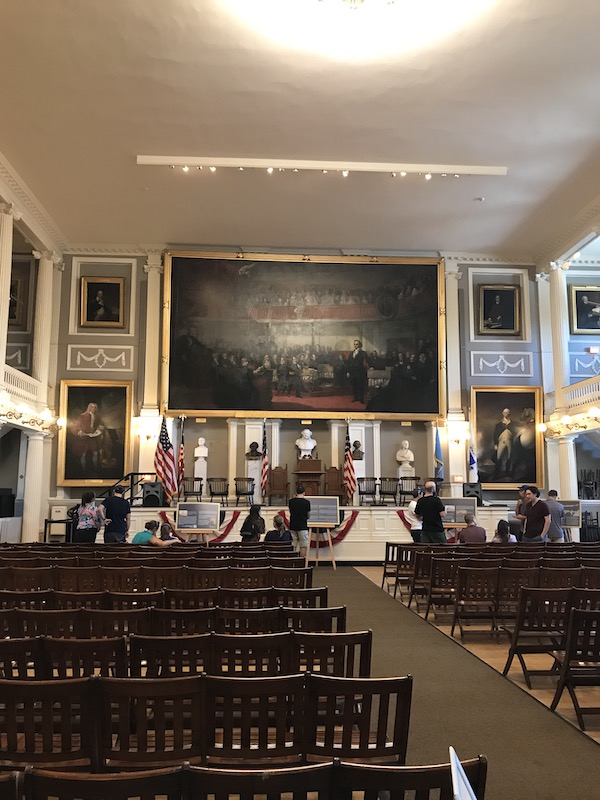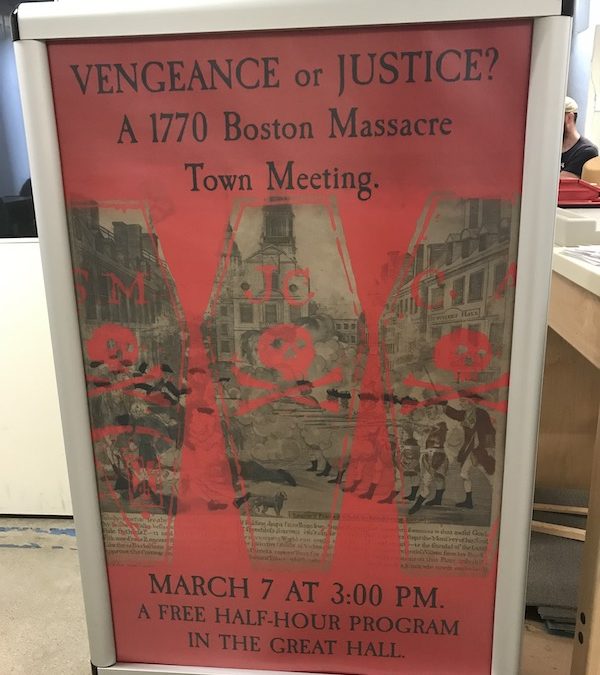Reconciling with the Revolutions: Boston National Historic Park
Written by: Zobeida Chaffee-Valdes
I moved to Boston 10 months ago, to begin a masters degree in Public History. When you think about “history” and “Boston”, the big event is the American Revolution. In my degree program, Revolutionary History was not the focus, as our goal as future public historians is to find ways to engage audiences in histories that have often gone overlooked. To this end, my graduate work has emphasized 20th century history in MA, particularly the fight for equal education and integrated schools, as well as the history of local social-justice organizations like Gay Community News, the Combahee River Collective, and Freedom House. This is all to say that when I began my internship with Boston National Historical Parks, home of the Freedom Trail — which includes sites like the Paul Revere House, Bunker Hill, and Faneuil Hall– I hadn’t studied the American Revolution since high school. It’s a lot of information to brush up on!

A poster advertising one of the interpretive programs that has been offered at Faneuil Hall titled “Vengeance or Justice? 1770 Boston Town Massacre Town Meeting”
I don’t want to give the impression that National Parks of Boston (NPB) is all-Revolution all the time. One of Boston’s National Parks is the Boston African American Heritage Park, which operates Boston’s Black Heritage Trail and interprets the history of the free Black community on the North slope of Beacon Hill, particularly focusing on the Abolitionist work carried out by its residents. As part of my role, I have been researching the lives of residents living in this 19th century abolitionist community, and writing short biographies of their lives to include on the Boston African American National Historic Site’s website.
I’ve spent the first weeks of my internship exploring the historical sites along the Freedom Trail and Black Heritage Trail, writing content for our web-assets, and putting together my own interpretive program for Faneuil Hall, one of the major site resources we operate also known as the “Cradle of Liberty.” While Faneuil Hall is on the Freedom Trail and is most well-known as a gathering space for Boston’s Sons of Liberty in the 1760s, it has a much longer legacy that I am only just starting to learn about. After the American Revolution, Faneuil Hall — where I spend the bulk of my time– continued to be used as a meeting/event space, hosting Abolitionist and Suffragist orators, as well as meetings hosted by their opponents. Even in the 20th and 21st centuries, Faneuil Hall has served as a symbol of free speech and site for discourse and debate on topics relevant to the American People.

A photograph of the interior of Faneuil Hall’s Great Hall
Beyond my day-to-day duties, my role at NPB includes developing content which connects the Revolutionary and Abolitionist periods. There’s a lot of material to work with– many addresses given in Faneuil Hall by Abolitionist leaders echo the words and phrasing of Samuel Adams and James Otis. In addition, there are many parallels to be drawn between the organizing strategies utilized by the Sons of Liberty and Boston’s Anti-slavery societies, particularly in the years between the passage of the Fugitive Slave Act of 1850 and the end of the Civil War. Finding ways to draw these connections into the light, both in my interpretive work in Faneuil Hall and the digital projects I am developing, has been extremely rewarding.
I hope that in the coming weeks, I can see this valuable work cumulate into an engaging interpretive program and educational resource.
Interested in learning more about American Conservation Experience, including our programs – Conservation Crew and Emerging Professionals in Conservation? If so, click here to check out our resources, media, and to apply online.
